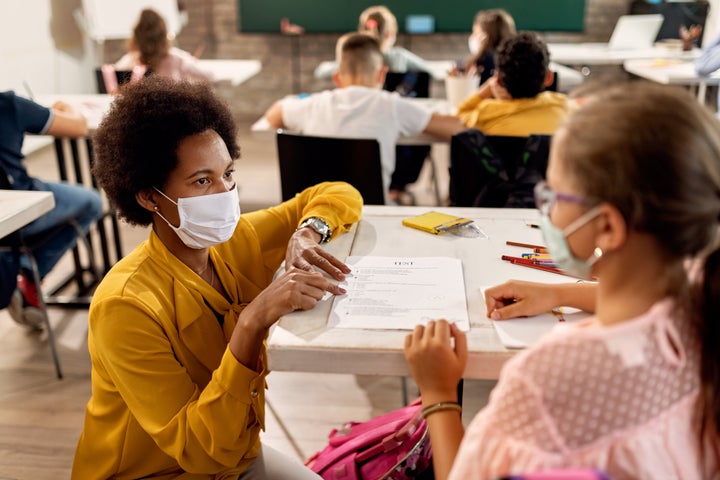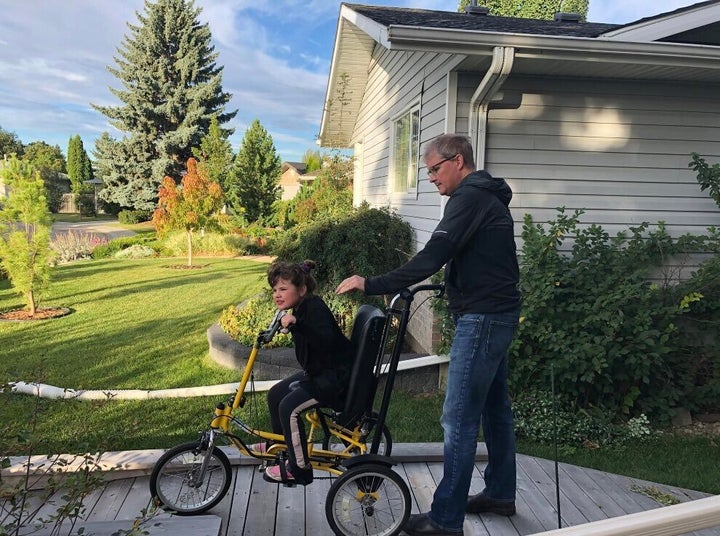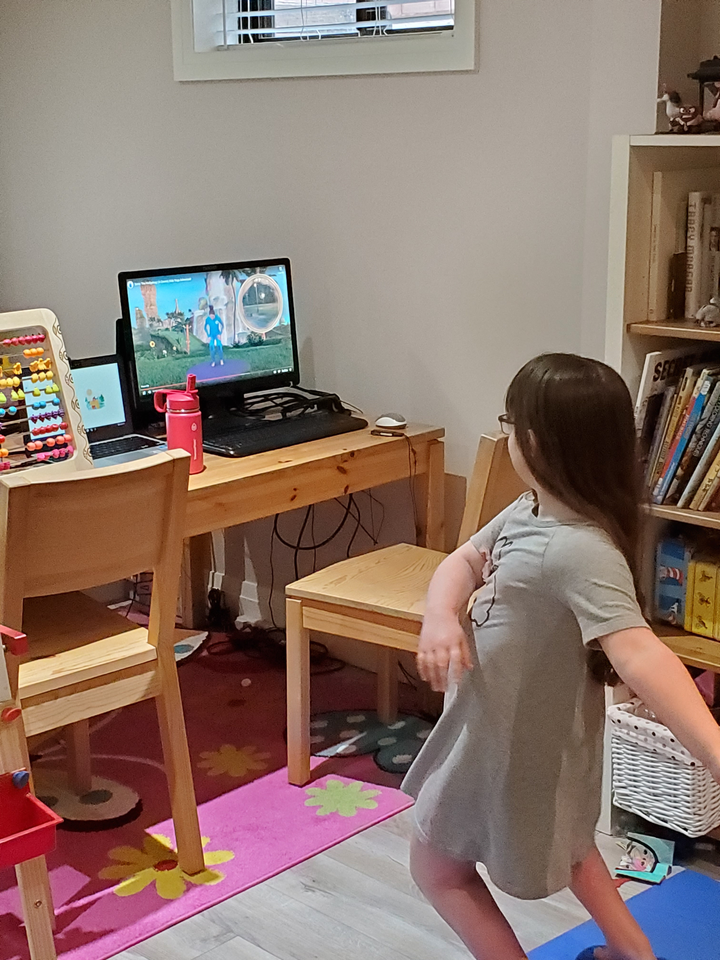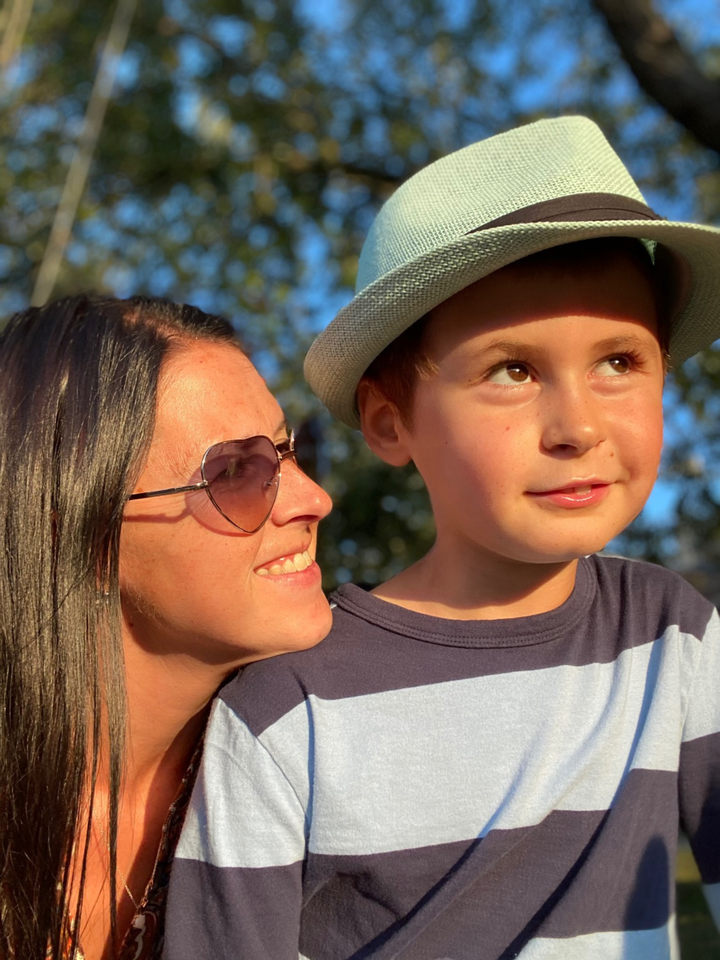“He needs school the way people need water.”
For Charlotte Schwartz, news of schools reopening in September was a massive relief. The Toronto mother of a nine-year-old boy with special needs told HuffPost Canada that in-person attendance makes a world of difference to her son’s quality of life.
On top of the concerns Canadian parents of non-disabled students have about school safety — classroom sizes, outbreaks, and mixed cohorts popping social bubbles are just the tip of the iceberg — families of disabled kids or those with complex needs contended with unique pressures when it came to enrolling this year, with much riding on what support their kids could access. As a StatCan survey found, these families are the most worried about how their kids will get through the school year during the pandemic.
Learning support access, safety not universal
When a child has one or more disabilities, that doesn’t automatically make virtual learning the only safe route, as not every child will be vulnerable to COVID-19 in the same way. For example, those who are immunocompromised will have different experiences to those who aren’t ― same with those who struggle wearing face masks and those who find it bearable. That’s why Sick Kids recommends in-person schooling as safe for most children with medical conditions, so long as any unique safety considerations are taken into account.
However, weighing all the pros and cons of in-school learning is a tall order that’s impossible for parents to do, with circumstances differing from province-to-province ― in Alberta, budget cuts have reduced essential resources for kids with special needs ― and even, region-to-region: in Newfoundland’s town of Port aux Basques, for example, accessibility consultant Joan Chaisson told HuffPost Canada that their community fundraises to provide educational and emotional support materials for autistic students.
Although provinces like Ontario and Quebec have allotted millions ($10 million and $20 million respectively) in their back-to-school plans for special education supports, which range from assistive technology to educational assistants (EAs) who give one-on-one assistance, complaints by parents and advocates suggest that many families still feel their kids are being underserved by their educational ministries, with resources spread too thin. This sentiment has been echoed by teachers, with the Globe And Mail reporting that several Ontario school boards expect them to conduct online and in-school special education classes simultaneously.

And as Schwartz has observed, not all schools are distributing support equally: The Toronto mom noted that her son’s school in the Regent Park neighbourhood, which has many immigrant populations and multi-generational households, isn’t getting the same capped classrooms as other Toronto schools. According to Schwartz, although her son’s school faces similar vulnerable factors as “high-risk” schools in the Toronto District School Board, their class sizes are almost double the other schools’ cap of 15 students per room. While her own son’s class size is small, Schwartz fears having just one teacher assigned to a class of children who need significant one-on-one time won’t be sustainable.
Meanwhile, virtual learning has been criticized for failing to meet the social needs of neurodivergent kids, who may lean on the interpersonal skills that in-person classes nurture. Virtual learning can also be overwhelming for the parents of students with special needs, as they need to act as substitute special-ed teachers of sorts, on top of meeting the demands of being round-the-clock caregivers.
HuffPost Canada spoke to three parents raising children with special needs about how their month-long return to school went. They shared whether they kept their kids home and what September has been like for their families. For some, fighting for support has been a constant struggle. Others have turned towards community to supplement what their children need:
“She was so excited to see her aide”
Duane Froese, Edmonton father:
“We transferred Annika’s wheelchair and a bunch of her specialized equipment back to school before her first day, so she would be pretty much ready on day one. She was so excited to be there and to see her educational aide, who she’s been working with for three years. She has quite a few appointments in the afternoons, so we decided to do mornings in school and afternoons at home.

We did a lot of thinking before sending her back. Online learning is quite a challenge for her. We had two home support workers we’ve been working with since April, who come into our home just to limit contact. They were young women in special education who are back at university next week, so that’s part of the issue we’re always trying to solve, having people available to assist with Annika. That’s a challenge for all special needs families.
Watch: Families of children with special needs struggle to adjust to distance learning. Story continues below.
We looked at the risks and benefits of the two models and decided that for her, it was best that she returned. At her community school, Annika’s in a class of under 20. Between my wife and I, we have the flexibility to balance our time at home or in the office as needed. Balancing work and school is always a challenge, but we felt better able to tackle it this fall than we did back in March because we could draw on that experience. This month, we were better set up for our boys, who are doing home school, and for our home office setup.
We’re fortunate that we still have an aide, but I don’t think the laid-off aides have been re-hired in the same numbers anywhere near those that have disappeared. We’ve heard from word-of-mouth that a lot of kids will not have support.
There are a lot of challenges there for kids with disabilities in the classroom. There are less than half the aides at her school than there used to be before the layoffs, but no decrease in kids needing support. From our observations and conversations with other parents, only kids that have severe needs seem to be getting support. Annika requires one-on-one support all the time and so she has maintained assistance, but other kids with less severe physical needs haven’t been as well-supported.
In six weeks, we’re going to re-evaluate how the situation is and if we need to pull her out of school. In a way, working from home has been nice for my wife and I; we’ve collectively slowed down a lot. We’re not pushing our kids onto all these schedules anymore.
School re-entry has gone pretty well. Annika’s brothers are doing online school and mostly adjusting. Annika is super excited to be back amongst her friends. Given all of the caveats of COVID-19, things are going about as well as we could hope for.”
“Without hesitation, they wanted to stay home”
Meredith Sandles, Burlington, Ont. mother:
“I have twin daughters, Sidney and Audrey, in grade four. Audrey has spina bifida. Audrey is a walking, talking ball of imagination. Wearing a mask and not being able to hug is hard for her ― she hugs everyone. We’ve done virtual learning with mixed results. The teachers, like us, at the start of the pandemic, were just trying to get through the curriculum.
My husband and I asked the girls each independently what they would want to do if they had the choice between staying at home or going to school in September. And they both said without hesitation they wanted to stay home. I was a little surprised, as the drawback would be losing out on social interaction with friends.
For our personal situation, we have grandparents in our bubble we’re hoping to visit, and we wouldn’t feel comfortable if the girls were physically at school. We can be at home with them and they don’t need constant supervision. We’ve set aside a study space in the home, and they each have their own devices, so they can still have that division between school and home.

They have a great homeroom teacher; Audrey has already started receiving support from a special education resource teacher and an educational assistant. My husband and I are providing supplementary support during asynchronous learning ― online learning that doesn’t rely on live interaction ― as much as we can.
In addition to family and friends, we have a lot of support from Holland-Bloorview Kids Rehabilitation Hospital and the spina bifida community. Social media has kept us all connected, whether clinicians are checking in on us or families need personal protective equipment or other supplies shared.
I’m very confident that if we did need anything, within hours of me making a phone call or posting something on Facebook, somebody would ask me, ‘What’s your address?’ I’m on the board of Spina Bifida Families of Canada and we’ve done some social media Q&As between families and medical professionals, which has also helped connect people.
I’ve been keeping an eye on how they’re doing every day ... there were a few bumps along the way, but I am sure things will get sorted. Audrey is definitely going to need the physical presence of a parent nearby to stay engaged in classroom activities, but this was anticipated.”
“It’s going to be like denying a child medical care”
Charlotte Schwartz, Toronto mother:
“My son has a rare disease and he’s intellectually disabled. He’s biologically nine years old, but experiences life like a kid who is two or three. He attends an Intensive Support Program (ISP) centred on Primary Developmental Delay; it provides a lot of life support skills and basic literacy.
He struggled tremendously in March, when schools, his therapy centre, and playgrounds closed. There have been many moments where he has completely broken down and gone non-verbal in the last six months. When he suffers, it reverberates throughout the whole home.
Despite being a relatively well-educated person, I couldn’t give him what he needed when schools were closed. I’m able to feed him and take care of him, but I’m not a teacher or a therapist.

When I learned schools were reopening, the decision was very easy: He’s going to school because he needs it. I’ve got three other kids; if they don’t go to school they’ll be OK. He may not be. His behaviour and skills have regressed so much in half a year.
I’m terrified that somebody is going to get sick. But I’m also terrified of the long-term impact of my kid being out of school any longer than six months. I’m worried, because it’s looking like schools are going to shut down [due to rising infections]. If schools abruptly closed again, the ISP programs should be saved; their numbers are already quite small and because those children need them, it’s going to be like denying a child medical care.
We’re already seeing lots of cases of kids being sent home because they have a runny nose, a cough or some other totally random thing that kids always have all the time. But they’re all being sent home now. I’m most concerned for my kid who is disabled ― there are no plans made for him. There isn’t anything I could do with him if we had another true shutdown.”
Also on HuffPost: